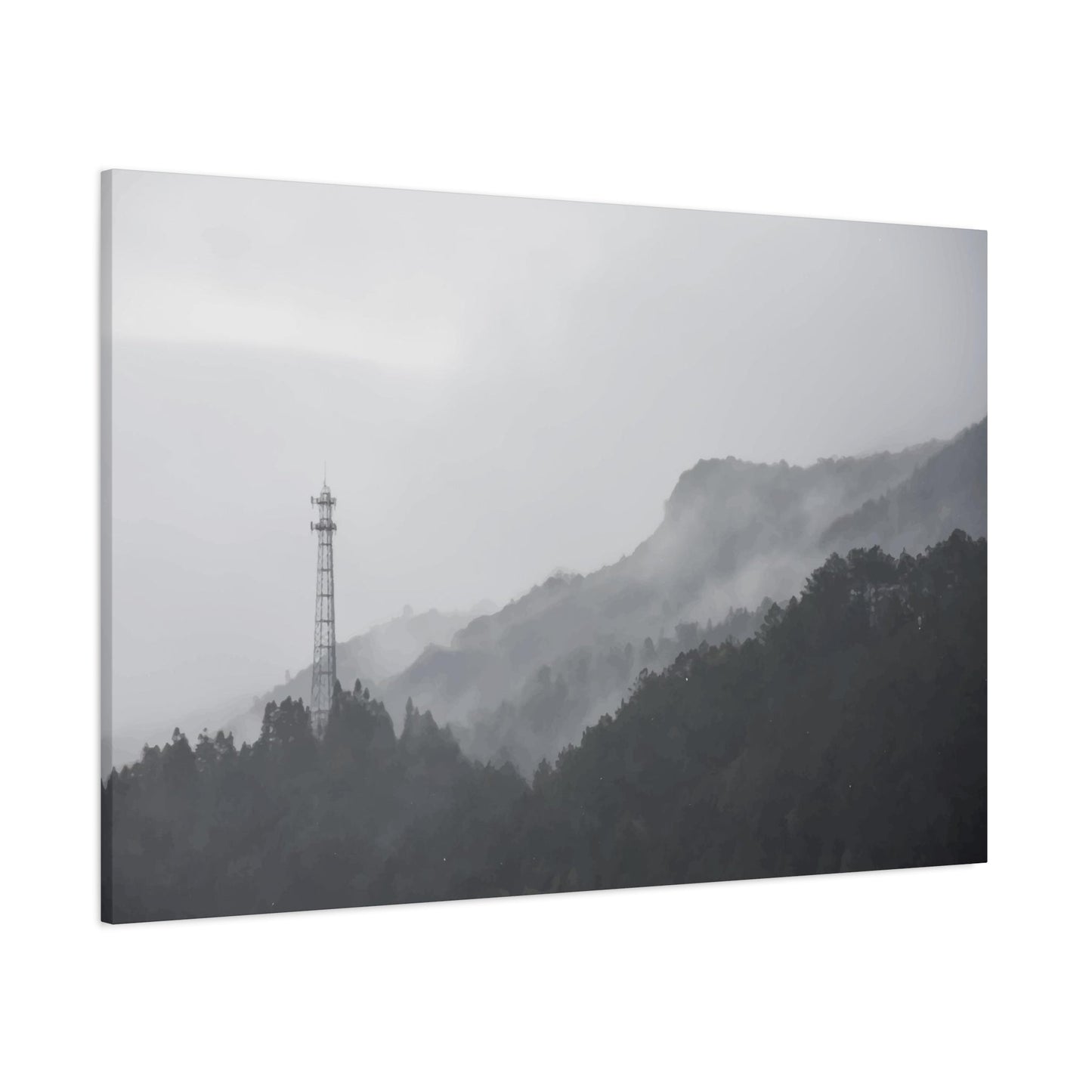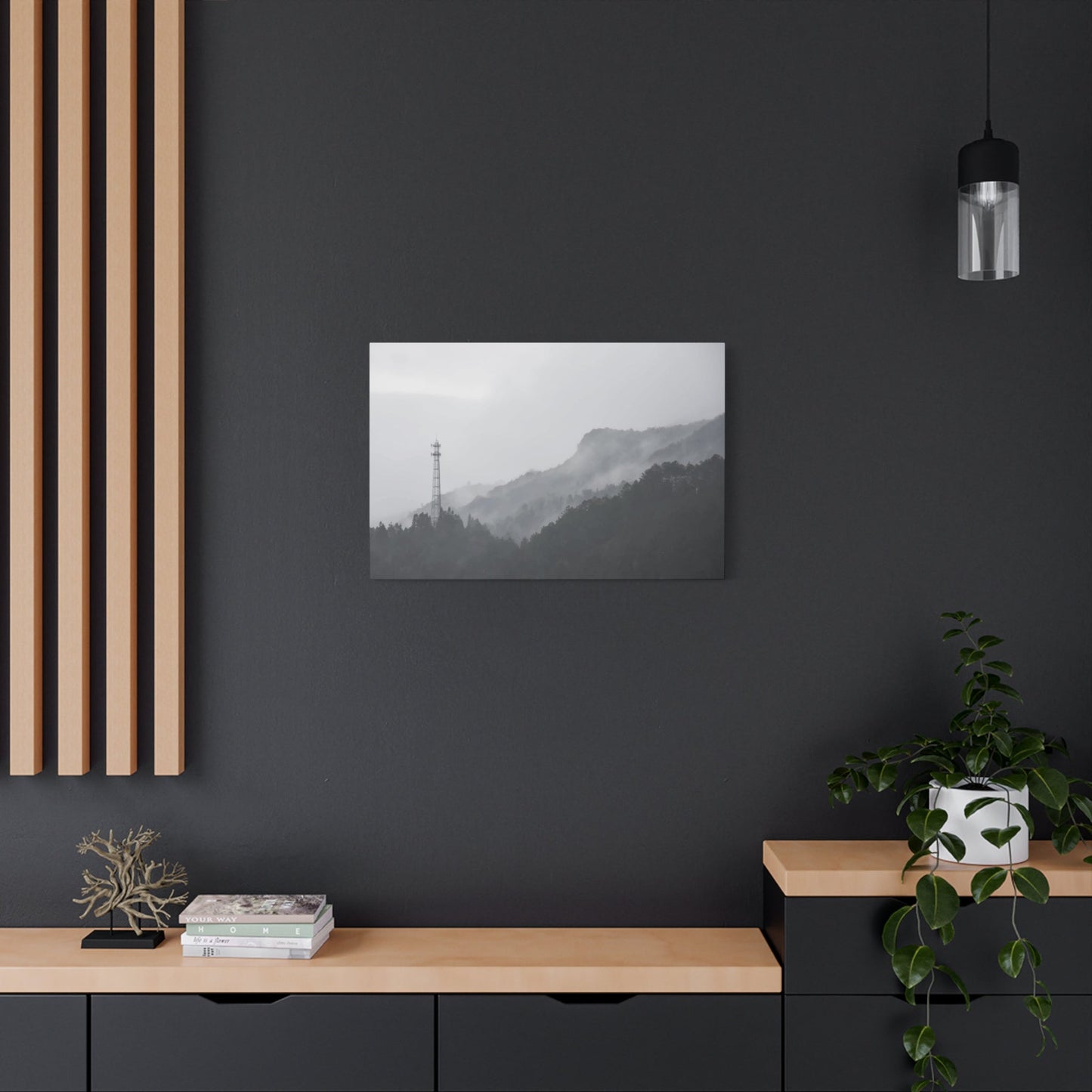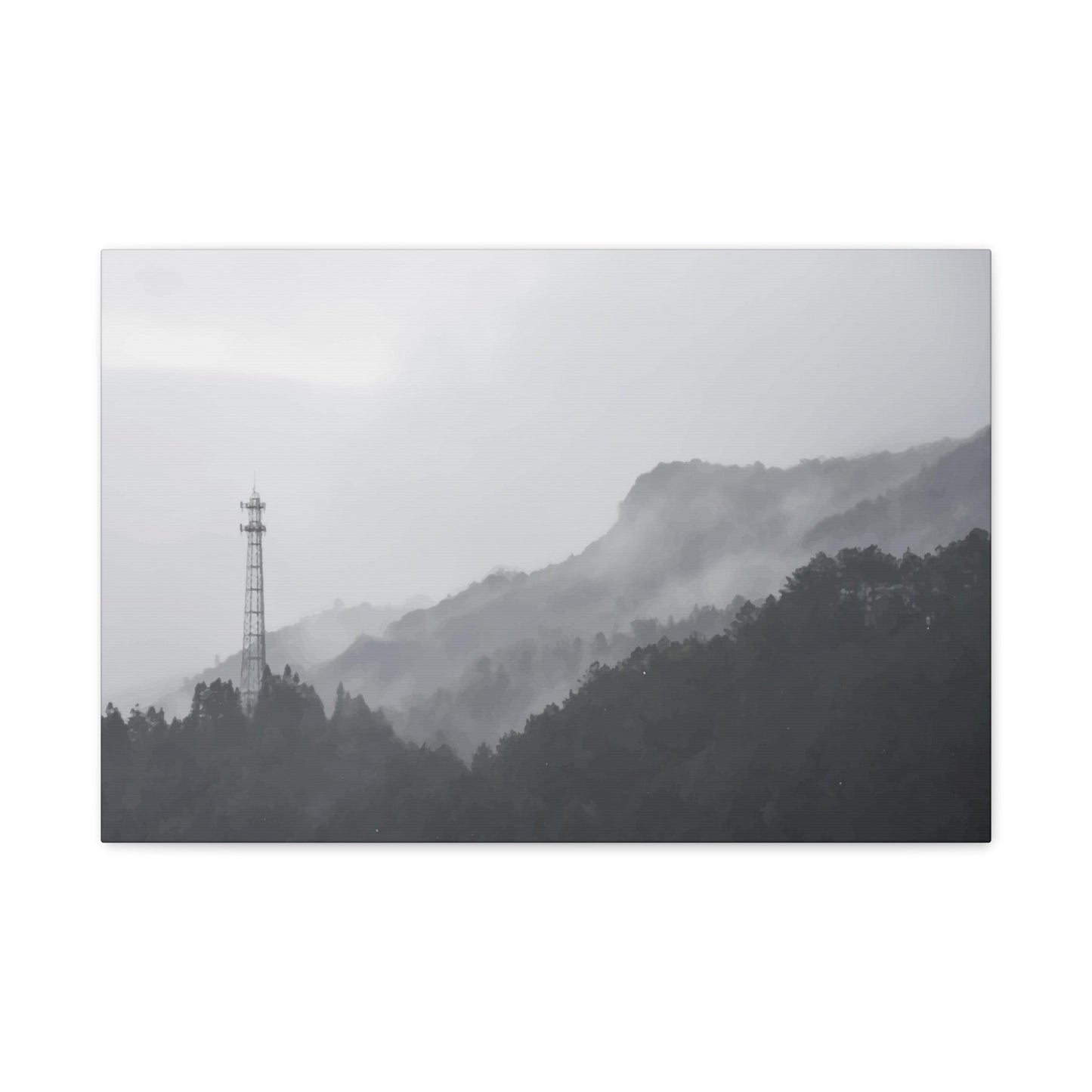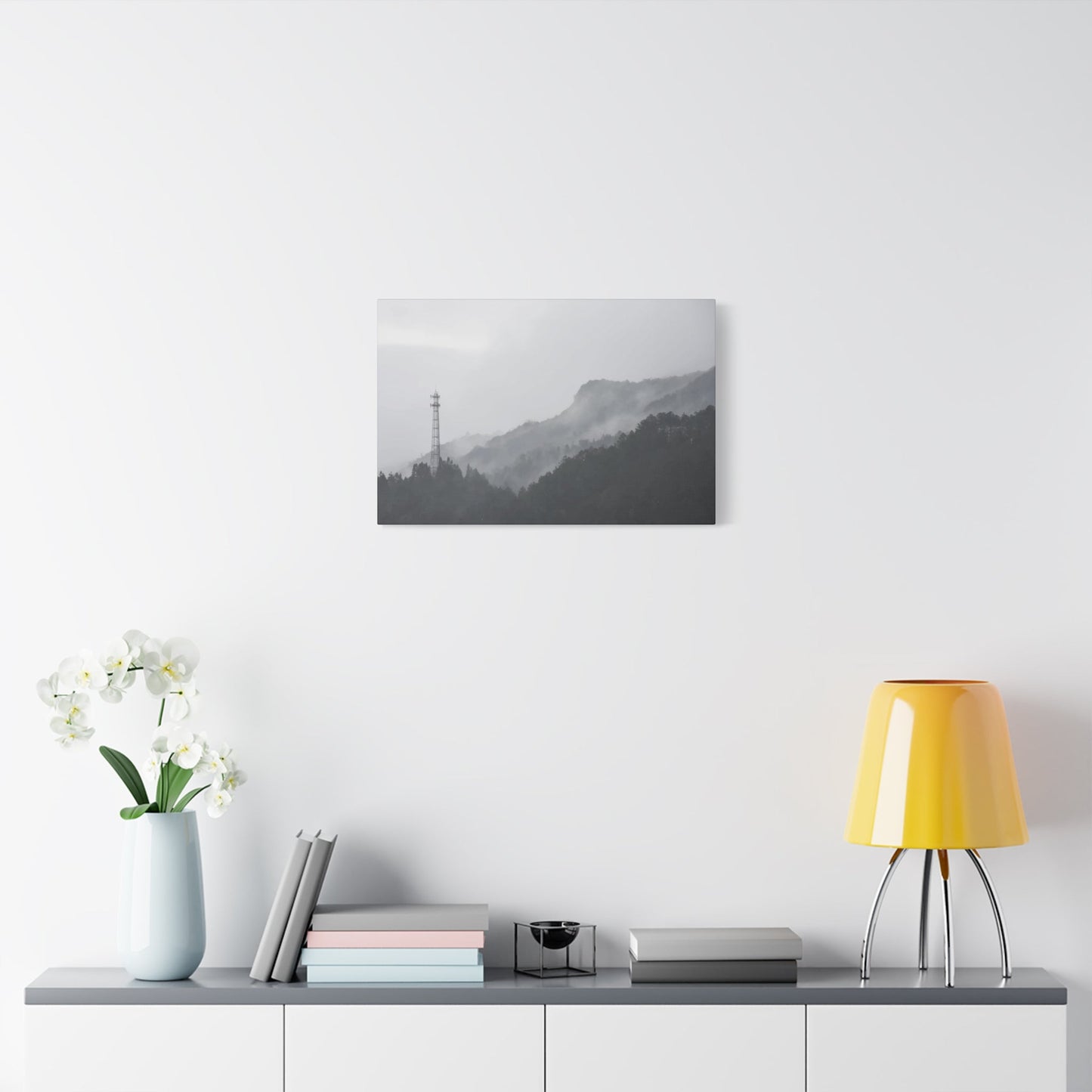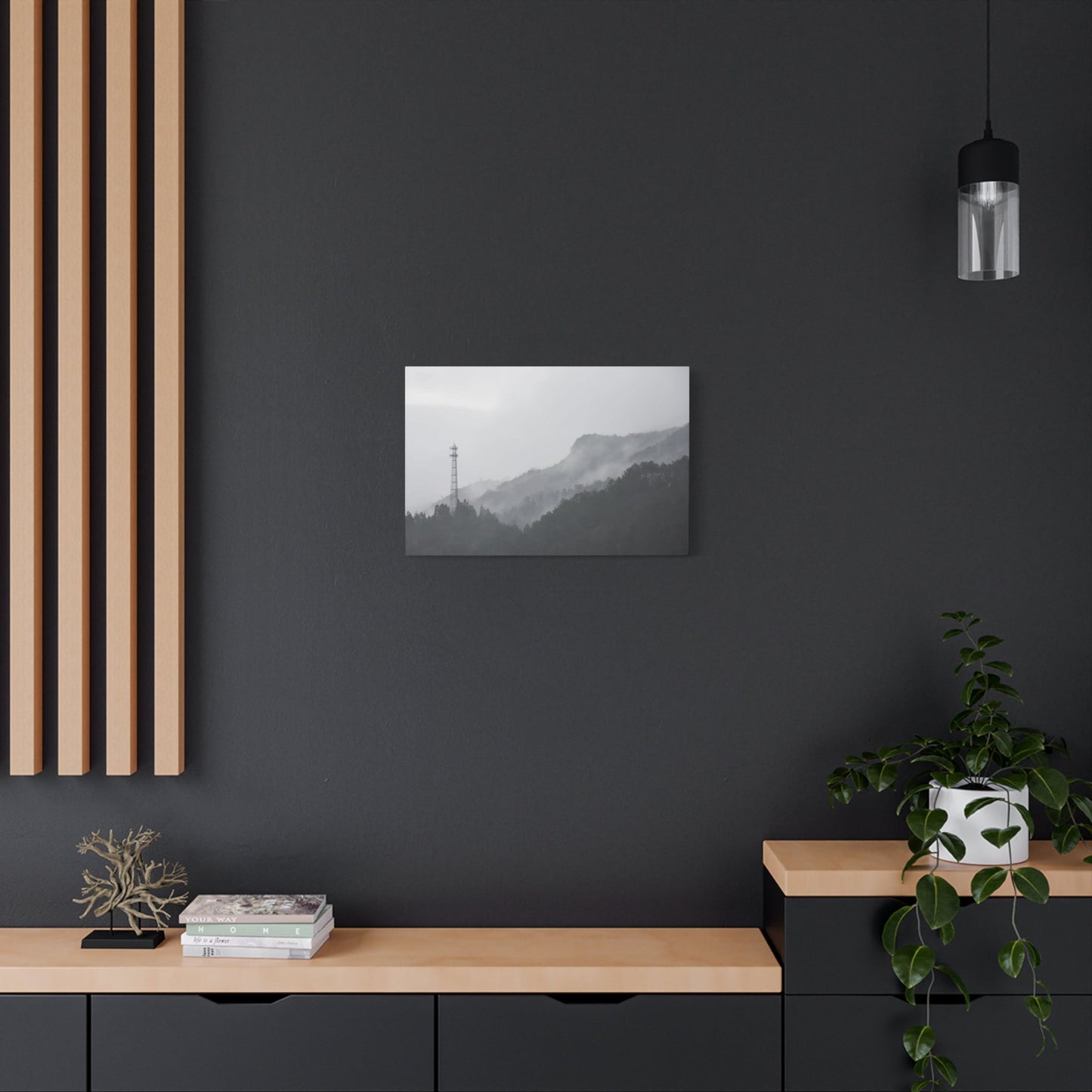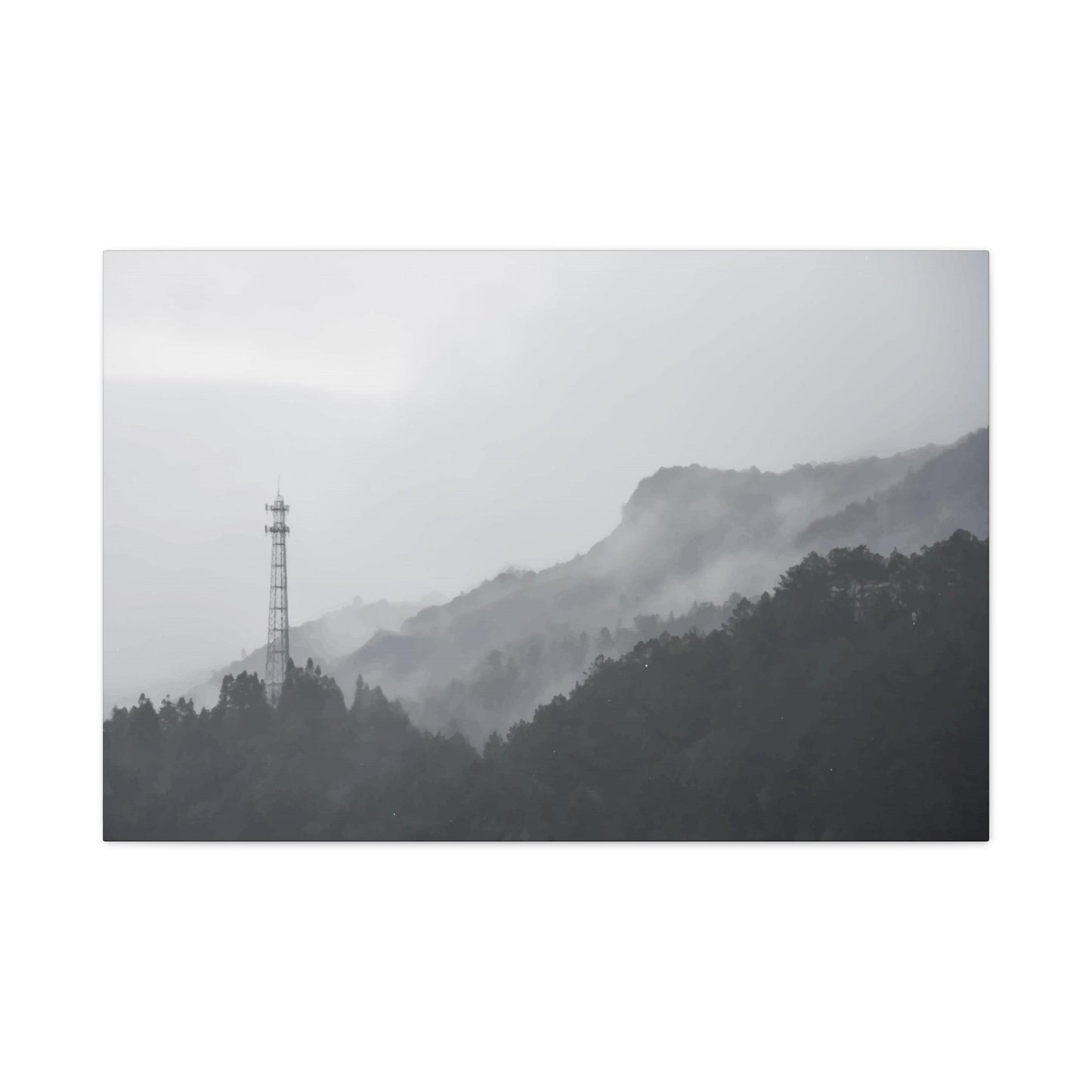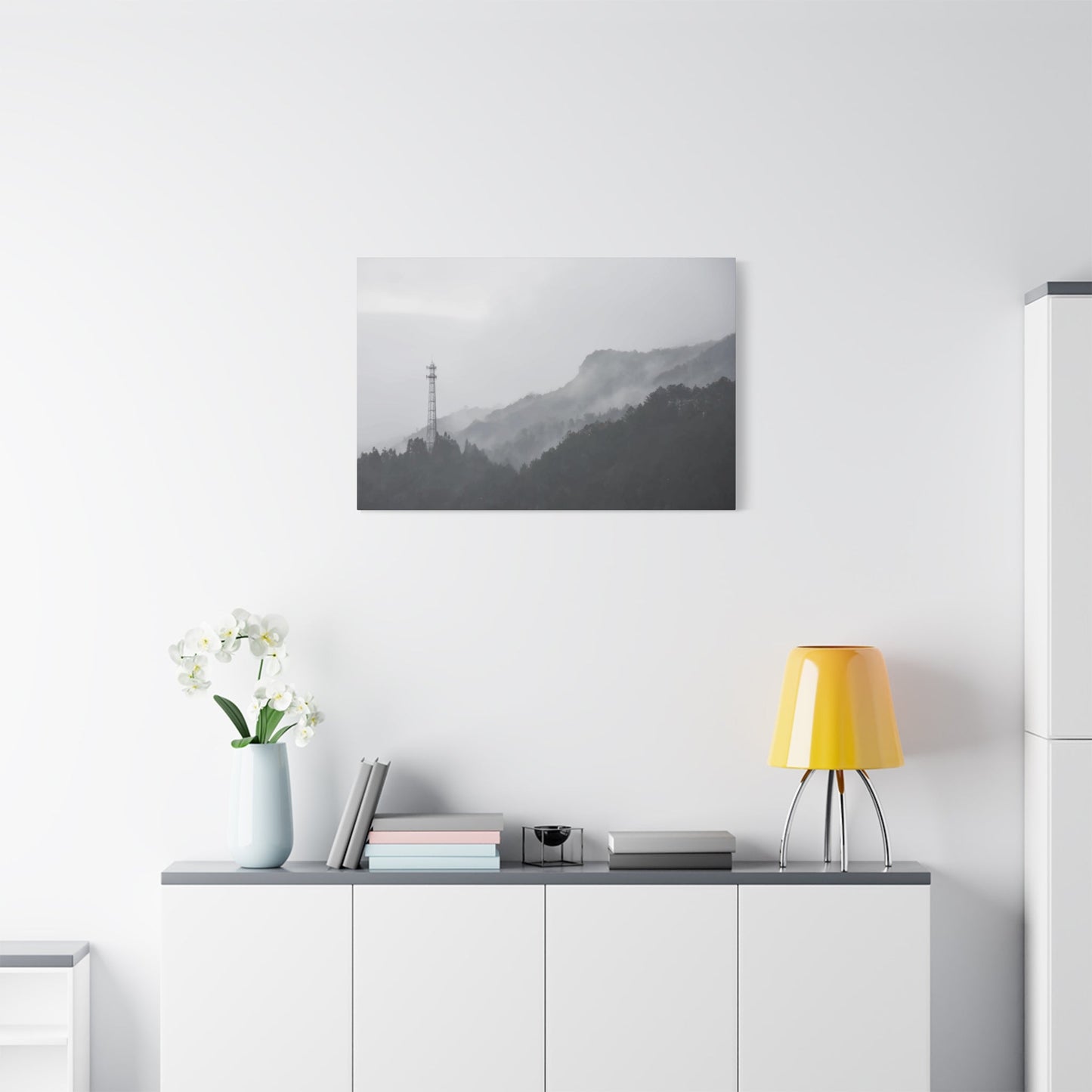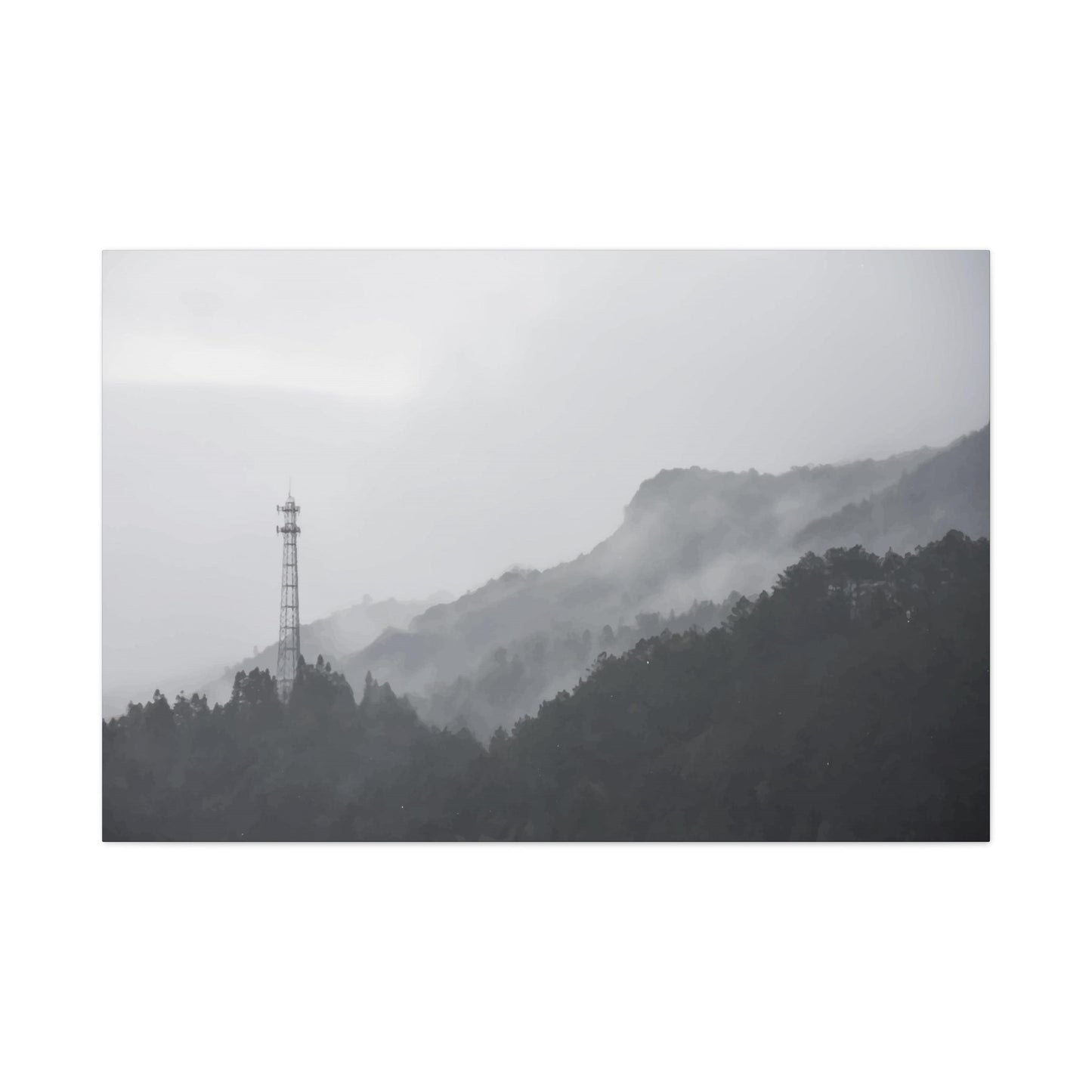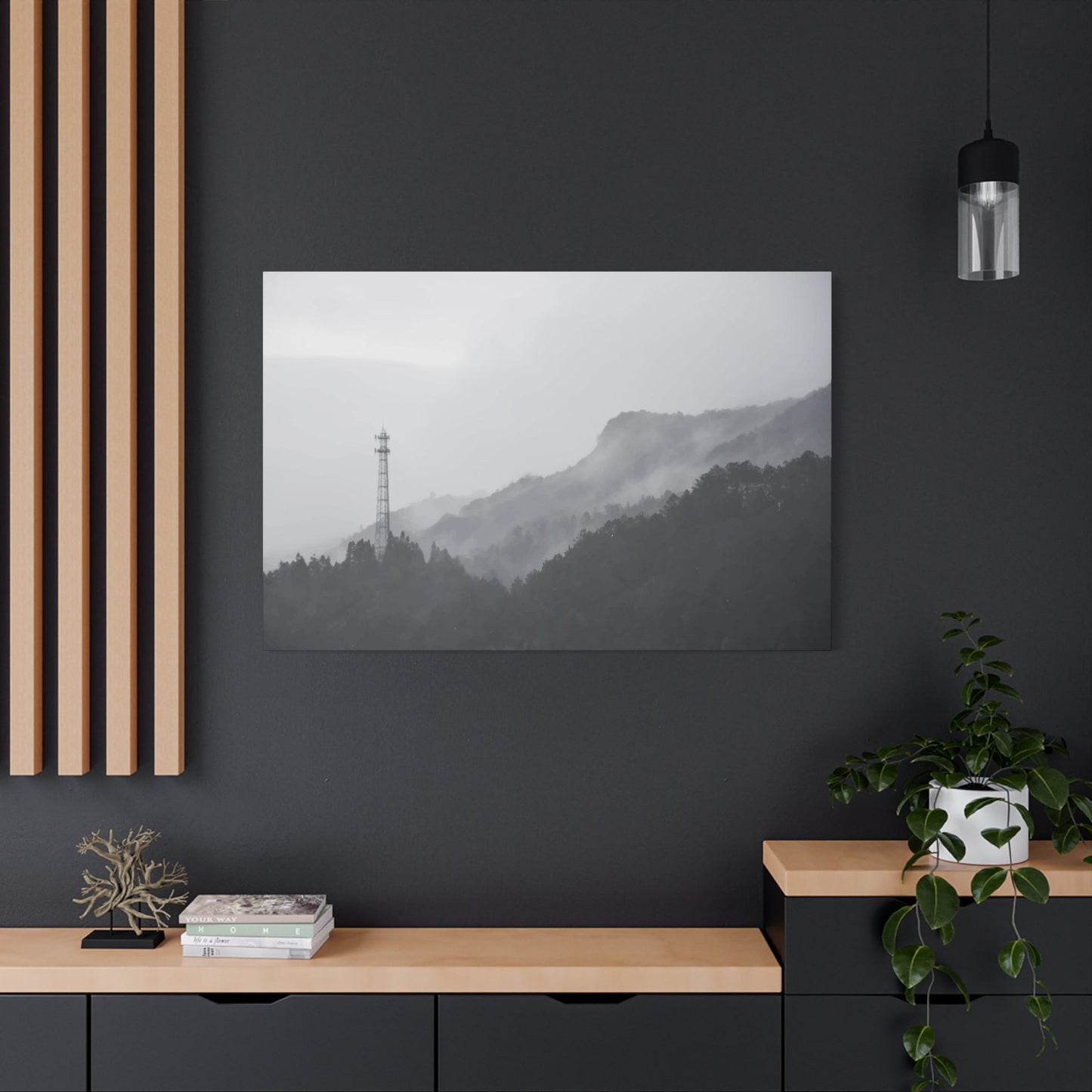Tower Wall Art: Elevate Your Space with Architectural Masterpieces
Architecture has always been a powerful source of inspiration for interior design enthusiasts and art collectors alike. Among the most captivating architectural subjects are towers, structures that have defined skylines and captured imaginations for centuries. From ancient fortifications to modern skyscrapers, these vertical marvels offer endless possibilities for transforming blank walls into stunning focal points. Whether you're drawn to the romance of medieval castles, the sleekness of contemporary cityscapes, or the timeless elegance of world-famous landmarks, incorporating tower-themed artwork into your living spaces creates visual interest while celebrating human ingenuity and architectural achievement.
Tower wall art serves multiple purposes beyond mere decoration. These pieces can make rooms feel taller, add sophistication to professional environments, and spark conversations about travel, history, and design. The versatility of tower imagery means there's something for every aesthetic preference, from photorealistic representations to abstract interpretations, from vintage illustrations to cutting-edge digital art. This comprehensive exploration will guide you through the diverse world of tower wall art, offering insights on how to select, display, and integrate these magnificent pieces into your home or workspace.
Legendary Structures Showcased Through Artistic Displays
The world's most recognizable towers have transcended their architectural purposes to become symbols of cities, nations, and human achievement. Displaying these legendary structures in your living spaces connects your home to global landmarks and the stories they represent. The Eiffel Tower remains perhaps the most beloved subject, with its iron lattice design offering both romantic associations and striking geometric patterns. Artwork featuring this Parisian icon works beautifully in bedrooms, dining areas, or any space where you want to evoke elegance and wanderlust.
Similarly, structures like Big Ben, the Leaning Tower of Pisa, the Burj Khalifa, and the Empire State Building each carry their own cultural significance and visual appeal. Big Ben representations bring a sense of tradition and British sophistication, making them excellent choices for libraries or studies. The Leaning Tower of Pisa adds a playful element with its famous tilt, perfect for casual living areas or creative workspaces. The Burj Khalifa represents modern achievement and futuristic thinking, ideal for contemporary offices or minimalist homes.
When selecting artwork featuring these famous structures, consider the perspective and artistic treatment. Aerial views offer dramatic compositions that emphasize the tower's relationship to its surroundings, while ground-level perspectives create a sense of grandeur and scale. Some artists focus on architectural details, showcasing the intricate engineering and design elements, while others capture these towers in atmospheric conditions like sunset, fog, or dramatic lighting that emphasizes mood over technical accuracy.
The beauty of featuring world-renowned towers in your decor is their instant recognizability. Guests immediately connect with these images, often sharing their own experiences visiting these landmarks or expressing aspirations to see them someday. This makes such artwork excellent conversation starters and creates emotional connections within your space. Additionally, these pieces can represent personal travel memories, serving as sophisticated souvenirs that far surpass typical tourist trinkets.
Color treatment significantly impacts how these legendary towers fit into your existing decor. Full-color photography captures the authentic experience of these structures, including surrounding architecture, skies, and urban environments. Black and white renditions emphasize form, shadow, and architectural lines, creating more versatile pieces that complement various color schemes. Sepia or vintage-toned prints add nostalgia and work particularly well with traditional or eclectic decor styles.
Silhouetted Tower Forms in Simplified Compositions
Minimalist design principles emphasize essential forms stripped of unnecessary detail, and tower silhouettes perfectly embody this aesthetic. By reducing towers to their basic shapes and outlines, these simplified compositions create powerful visual statements that work beautifully in contemporary spaces. The high contrast between dark silhouettes and lighter backgrounds creates striking graphics that function as both art and design elements, bridging the gap between decoration and architectural statement.
The power of silhouette art lies in its ability to convey recognition and meaning through shape alone. Even without architectural details, color, or texture, we instantly recognize iconic towers by their distinctive profiles. This immediate recognizability makes silhouette artwork accessible and impactful, while the simplified forms prevent visual clutter and maintain the clean aesthetic that minimalist spaces require. These pieces prove that sometimes less truly is more, achieving maximum impact through minimal means.
Black silhouettes against white or light backgrounds create the most dramatic contrast and work beautifully in Scandinavian or minimalist interiors where clean lines and monochromatic palettes predominate. These high-contrast pieces provide necessary visual weight without introducing competing colors or busy patterns. They anchor spaces while maintaining the airy, uncluttered feel that defines minimalist design. The graphic quality of these pieces also makes them feel contemporary and intentional rather than decorative afterthoughts.
Reverse silhouettes, featuring light tower forms against dark backgrounds, offer a different aesthetic that works particularly well in moody or dramatic interiors. These pieces create luminous effects, as though the towers themselves are glowing. This approach works beautifully in spaces with darker wall colors or in rooms where you want to create intimate, sophisticated atmospheres. The white-on-black color scheme also reduces eye strain in media rooms or bedrooms where darker walls are preferred.
Contemporary Tower Compositions for Current Living Spaces
Abstract art allows artists to respond to architectural forms without the constraints of realistic representation, and towers provide excellent subjects for abstract interpretation. These contemporary compositions might fragment tower forms, play with unexpected color relationships, reconstruct architectural elements in new configurations, or respond to the emotional or conceptual qualities of towers rather than their physical appearance. For homeowners seeking artwork that sparks conversation and adds sophistication to modern interiors, abstract tower pieces offer the perfect blend of recognizable subject matter and artistic innovation.
The appeal of abstract tower art lies in its ability to suggest architecture without depicting it literally. Viewers recognize tower-like vertical forms, geometric patterns reminiscent of building facades, or compositional elements that evoke skylines without seeing realistic representations. This suggestive quality allows the artwork to function both as architectural reference and pure visual composition, satisfying multiple viewing modes and maintaining interest over time. Abstract pieces also offer more flexibility in color coordination and design integration than realistic works.
Color field approaches to tower subjects might use vertical bands or blocks of color to suggest tower forms through proportion and placement rather than shape. A canvas featuring several vertical color sections of varying widths and heights can evoke a skyline or collection of towers while functioning primarily as color composition. These pieces work beautifully in contemporary spaces where color is used strategically and where artwork must coordinate with carefully considered palettes. The abstract nature prevents the artwork from dominating while still providing architectural references.
Geometric abstraction applied to tower subjects breaks architectural forms into their constituent shapes and reassembles them in new configurations. Rectangles, triangles, circles, and other geometric forms arranged vertically suggest towers while creating pattern and visual rhythm. These compositions often feature clean edges and flat color areas that complement modern furniture and clean-lined architecture. The mathematical precision of geometric abstraction also appeals to those who appreciate order and structure in their visual environment.
Archival Tower Images in Photographic Prints
Historical photography captures towers as they appeared in past eras, documenting changes in surrounding contexts, preservation efforts, and evolving urban landscapes. These archival images serve as both artistic statements and historical records, offering glimpses into how famous structures looked decades or even centuries ago. For history enthusiasts, collectors, and those who appreciate vintage aesthetics, historical tower photography provides deeply satisfying wall art that combines beauty with documentary value.
The appeal of historical tower photography lies in its authenticity and storytelling capacity. These images show towers in their original contexts, often before modern development transformed surrounding areas. Vintage photographs might reveal horse-drawn carriages passing beneath towers now surrounded by cars, show neighborhoods since demolished, or capture architectural details later altered or lost. These glimpses into past moments create connections across time and spark imagination about the lives and events these structures witnessed.
Black and white historical photography dominates this category, partly because color photography wasn't widely available until mid-century. The monochromatic palette adds gravitas and timelessness while emphasizing form, composition, and tonal range. Grain structure in vintage photographs also creates distinctive textures that digital images lack. These qualities make historical photographs particularly effective as fine art prints rather than simple snapshots, justifying their display in prominent locations.
Architectural documentation photography from the late nineteenth and early twentieth centuries shows towers with technical precision and artistic composition. Professional photographers of that era often used large format cameras and meticulous techniques that produced extraordinary detail and tonal range. Modern prints from these historical negatives can reveal incredible sharpness and quality that rivals or exceeds contemporary images. For those who appreciate both technical excellence and historical significance, these archival images offer the best of both worlds.
Architectural Drawings Transformed into Decorative Art
Technical architectural drawings represent a fascinating intersection of art, engineering, and documentation. Historical blueprints and technical drawings of towers reveal the planning, precision, and problem-solving behind these structures. Transforming these working documents into wall art celebrates both the finished towers and the intellectual processes that brought them into being. For those who appreciate technical detail, historical documents, or the aesthetics of technical drawing, tower blueprints offer sophisticated and intellectually engaging wall art options.
The visual appeal of blueprints derives from their distinctive appearance and association with creative planning and construction. Traditional blueprints feature white lines on deep blue backgrounds, creating striking contrast and a specific aesthetic strongly associated with architecture and engineering. This color scheme works beautifully in studies, offices, or anywhere you want to evoke professionalism and technical expertise. The technical notation, measurements, and drawing conventions add dense visual texture that rewards close examination.
Blueprint sections and elevations show towers from specific viewpoints that reveal different information than photographs or artistic renderings. Elevation drawings display vertical facades with precise proportions and architectural details. Section cuts reveal internal structures, floor heights, and spatial relationships that exterior views cannot show. Plan views from above show footprints and spatial organizations. These different drawing types can be grouped together to provide comprehensive views of single towers or mixed to create visually varied collections.
Scale relationships in blueprint art deserve consideration. Actual blueprints were created at specific scales to fit on standard paper sizes while showing adequate detail. When reproducing these drawings as art prints, you might maintain original sizes for authenticity or enlarge them to emphasize details and create more impactful displays. Extremely large format blueprint-style prints create dramatic focal points, while smaller pieces feel more intimate and detail-focused. Consider how closely viewers will examine the pieces when determining appropriate sizes.
Curating Tower-Focused Gallery Displays
Gallery walls have become increasingly popular as they allow homeowners to display multiple pieces that create visual narratives and demonstrate personal tastes. Tower-themed gallery walls offer cohesive subjects while allowing diversity in artistic approach, geographic location, historical period, and size. Planning and executing effective tower gallery walls requires understanding composition principles, frame selection, spacing strategies, and content curation that creates unity within diversity. A well-designed tower gallery wall becomes a focal point that expresses personality while showcasing architectural appreciation.
The foundation of successful gallery walls lies in establishing clear organizational principles. For tower-themed collections, you might organize chronologically from medieval to modern, geographically from east to west, or by artistic medium from photographs to illustrations. Alternatively, you might organize by visual characteristics like color progression, size relationships, or stylistic similarities. Having an organizational principle doesn't mean the arrangement must be obvious to viewers, but it helps ensure the collection feels intentional rather than random.
Frame coordination significantly impacts gallery wall cohesion. Three main approaches work effectively. First, identical frames throughout create maximum unity and formal symmetry, working best for traditionally styled spaces and symmetric arrangements. Second, frames in the same material but varied sizes accommodate different print dimensions while maintaining visual relationships through color and texture. Third, mixed frame styles united by color family allow more eclectic combinations while establishing enough consistency to prevent chaos. For tower galleries spanning various periods and styles, mixed frames in black, white, or natural wood tones usually work best.
Layout planning determines whether your gallery wall feels organized or chaotic. Before hanging anything, create a paper template of each frame and arrange these on the wall using removable tape. This allows experimentation without damaging walls or artwork. Try grid arrangements for formal, balanced displays, salon-style asymmetric arrangements for more casual spaces, or linear arrangements along architectural lines like chair rails or ceiling edges. The key is ensuring the overall collection has a cohesive envelope or boundary that prevents the arrangement from feeling scattered.
Bordered Depictions of Historic Timepieces in Towers
Clock towers represent a specialized category within tower wall art, combining architectural beauty with functional purpose and the universal fascination with time. These structures have served communities for centuries as both practical timekeeping devices and civic landmarks. Framed prints featuring famous clock towers bring history, nostalgia, and symbolic depth to interior spaces. The combination of architectural grandeur and the clock faces themselves creates compositionally rich images with both literal and metaphorical resonance about time passage, tradition, and community identity.
Big Ben remains the most iconic clock tower in the world, its Gothic Revival architecture and prominent position on the Thames making it instantly recognizable. Artwork featuring this London landmark brings British sophistication and historical gravitas to spaces. The tower's vertical emphasis and ornate detailing provide visual interest, while the clock face adds a focal point within the composition. Black and white prints emphasize architectural details and create timeless elegance, while color images capture the honey-colored stone and surrounding urban context.
The Spasskaya Tower in Moscow's Red Square represents another globally recognized clock tower with distinctive character. Its red brick construction, green roof, and ruby star create a different aesthetic than Western European clock towers. Artwork featuring this structure introduces Russian architectural traditions and Cold War era associations for some viewers. The colorful, ornate detailing works beautifully in spaces that embrace rich color and decorative elements rather than minimalist restraint.
American clock towers offer domestic alternatives to European landmarks. The Custom House Tower in Boston, the Wrigley Building clock tower in Chicago, and various courthouse and city hall clock towers across the country represent regional architectural traditions. Featuring local or regionally significant clock towers creates personal connections and celebrates nearby heritage rather than defaulting to international landmarks. These pieces work particularly well in professional environments, government buildings, or homes with strong regional identity.
Historical clock towers from smaller towns and cities often feature more intimate scale and charm than famous urban landmarks. Village church clock towers, town hall timepieces, and railway station clocks represent community focal points with personal significance for many people. Vintage photographs or illustrations of these modest structures evoke nostalgia and simpler times, working beautifully in country houses, traditional interiors, or anywhere you want to create warm, welcoming atmospheres.
Evening Tower Scenes with Illuminated Elements
Nighttime photography transforms towers from daytime landmarks into glowing beacons against dark skies. The dramatic contrast between illuminated structures and dark surroundings creates striking images with strong visual impact. Night photography also captures a different character of urban environments, when towers transition from workplace and tourist destinations to illuminated sculptures that define evening skylines. For those seeking dramatic, sophisticated wall art with bold contrast and atmospheric mood, nighttime tower photography offers compelling options that work beautifully in entertainment spaces, bedrooms, and contemporary interiors.
The technical challenges of night photography often result in images with distinctive aesthetic qualities. Long exposures smooth out motion, creating silky water surfaces in foreground reflections or light trails from passing traffic that add dynamic elements. Light sources bloom and glow in ways that differ from daytime images, creating soft halos and romantic atmosphere. The reduced color palette of night scenes, often dominated by blues, warm tungsten tones, and accent colors from architectural lighting, creates sophisticated chromatic harmony.
Architectural lighting design showcases towers in their best light, literally. Many famous towers feature permanent lighting schemes that emphasize architectural features, create visual drama, and establish iconic nighttime appearances. The Eiffel Tower's golden lighting and hourly sparkle displays, the Empire State Building's colored LED displays celebrating holidays and events, and the distinctive lighting of towers worldwide create opportunities for photographers to capture structures with intentional visual presentation. These lit towers become artworks in themselves, and photographs document both architecture and lighting design.
Window patterns in towers create striking compositions in night photography. Illuminated windows against dark facades create irregular patterns of light that reveal building occupancy and internal activity. Office towers with random window illumination create unintentional abstract patterns, while residential towers show the varied lighting choices of many households. Some towers create intentional light displays using coordinated window illumination to create images or patterns. These window light patterns add human presence and activity to architectural photography.
Reflections amplify the impact of tower lighting in night photography. Wet pavement after rain, calm water bodies, or glass building facades all create mirror images that double the visual presence of illuminated towers. These reflections create symmetrical compositions, extend visual impact beyond the actual structures, and add complexity to relatively simple scenes. Photographers often seek out rainy nights or waterfront locations specifically to incorporate reflections that enhance their tower subjects.
Color temperature variations create visual interest in night tower photography. The warm orange glow of sodium vapor street lamps contrasts beautifully with cool blue twilight skies and the neutral white of LED building lights. These color contrasts create visual tension and atmospheric depth that monochromatic lighting schemes cannot achieve. The mixing of artificial light types adds complexity and prevents night scenes from feeling flat despite limited overall color ranges.
Rural Stone Fortifications in Natural Settings
Rustic stone towers situated in countryside landscapes offer dramatically different aesthetics compared to urban towers. These structures, often centuries old, demonstrate traditional building methods using local materials. Their weathered surfaces, integration with natural surroundings, and historical atmospheres create artwork that brings organic textures and pastoral beauty into interior spaces. For those decorating country homes, cabins, or urban spaces seeking connections with nature and history, rustic tower artwork provides the perfect blend of architecture and landscape.
Irish round towers represent distinctive stone tower forms with mysterious histories. These medieval towers, found throughout Ireland, rise from green landscapes with conical caps and minimal openings. Their simple cylindrical forms and aged stone surfaces create strong vertical elements within horizontal landscape compositions. Artwork featuring these towers brings Celtic history and Irish countryside beauty into homes, working particularly well in spaces with traditional or cottage-style decor. The neutral stone tones coordinate easily with various color schemes.
Scottish castle towers perched on dramatic cliffsides or emerging from misty highlands create romantic, atmospheric imagery. These stone structures often show more architectural elaboration than Irish round towers, with battlements, multiple windows, and integration with larger castle complexes. The dramatic Scottish landscapes add powerful natural elements that balance the architectural subjects. Such artwork works beautifully in spaces with traditional decor, particularly those incorporating plaid, heavy textiles, and dark wood furniture.
Mediterranean stone towers offer warmer aesthetics with golden stone colors and settings in cypress-dotted landscapes or coastal locations. Italian, Spanish, and Greek towers often show Renaissance or earlier medieval influences with distinctive regional characteristics. The warm stone tones and bright Mediterranean light create inviting images quite different from northern European towers. These pieces work well in homes with Tuscan, Spanish, or general Mediterranean design themes, bringing warmth and Old World charm.
Expansive Tower Illustrations for Feature Walls
Statement walls demand bold artwork that commands attention and anchors room design. Tower murals and large-scale installations transform entire walls into architectural showcases that immerse viewers in vertical grandeur. These dramatic installations work beautifully in high-ceilinged spaces, commercial environments, or residential rooms where architectural impact is desired. Creating or selecting tower murals requires careful consideration of scale, subject matter, viewing distance, and integration with existing architectural features to ensure successful results that enhance rather than overwhelm spaces.
Photorealistic tower murals create the illusion of windows opening onto urban scenes or historical sites. A full wall mural depicting the Eiffel Tower viewed from street level can transport a room to Paris, while a wraparound mural of a medieval castle tower can create immersive historical atmospheres. These trompe-l'oeil effects work best in rooms without competing focal points, where the mural can dominate as the primary design element. Proper scale matching ensures realistic perspective that convinces the eye rather than looking distorted.
Abstract tower murals offer dramatic impact without literal representation. These large-scale pieces might use tower forms as starting points for explorations in color, pattern, or gestural mark-making. Vertical sweeps of color suggesting towers, geometric patterns inspired by building facades, or energetic brushwork evoking urban skylines create artistic statements that complement contemporary interiors. Abstract approaches also allow perfect color coordination with existing decor since the palette can be customized to match design requirements.
Graphic design approaches to tower murals employ bold shapes, limited color palettes, and strong compositions that read clearly even at large scales. Silhouettes of famous towers in solid colors, line-based illustrations emphasizing architectural contours, or geometric interpretations reduced to essential forms all work effectively as murals. These graphic treatments feel contemporary and intentional, avoiding the dated appearance that photographic murals sometimes acquire. They also tend to coordinate more easily with modern furniture and clean-lined architecture.
Panoramic tower murals span entire walls with horizontal compositions that might include multiple towers, extended cityscapes, or single towers shown with significant surrounding context. These wraparound views create immersive environments that engage peripheral vision and create spatial expansion effects. Panoramic formats work particularly well in rooms with limited furniture where wall space remains visible, allowing the full sweep of the mural to be appreciated. They also work excellently in commercial spaces like lobbies or conference rooms where architectural grandeur reinforces professional atmosphere.
Textured and three-dimensional tower murals move beyond flat printed images to incorporate physical relief, varied materials, or dimensional elements. These might include actual materials like metal, wood, or stone integrated into tower imagery, raised elements that create shadows, or layered applications that build physical depth. Dimensional murals create more interactive viewing experiences that change based on lighting conditions and viewing angles. They particularly suit spaces with dramatic lighting where changing shadows and highlights can be appreciated.
Creative Renderings of Famous Tilted Structures
The Leaning Tower of Pisa stands alone as an accidentally iconic structure whose flaw became its fame. This architectural anomaly provides unique opportunities for artistic interpretation and playful displays. Artwork featuring leaning towers in general, or the Pisa tower specifically, brings whimsy, conversation potential, and mathematical intrigue to spaces. These pieces work particularly well in casual environments, children's areas, or anywhere a lighter, more playful approach to architectural art is desired.
Historical perspectives on the Leaning Tower document its increasing tilt over centuries before stabilization efforts arrested its motion. Vintage engravings and photographs showing the tower at various angles provide both artistic merit and historical documentation. These images tell stories of engineering challenges, architectural preservation, and human determination to save flawed structures. For history enthusiasts or those who appreciate stories of problem-solving and perseverance, these historical views offer intellectual engagement alongside visual appeal.
Photographic perspectives that exaggerate the tower's lean create dramatic compositions that emphasize the structure's unique characteristic. Shooting from low angles with the tower leaning into the frame creates vertiginous effects that exaggerate instability. These dynamic perspectives create visual tension and energy quite different from straightforward architectural documentation. Such images work well in spaces where you want active, engaging artwork rather than calming, static compositions.
Tourist interaction photographs that show visitors posing as though holding up or pushing the tower add human elements and humor to architectural subjects. These playful images celebrate both the structure and human creativity in response to it. While perhaps too casual for formal spaces, these lighthearted pieces work wonderfully in family areas, casual dining spaces, or anywhere laughter and levity are valued. They also serve as excellent reminders of personal travel experiences and the universal human impulse to play.
Artistic manipulations that isolate the tower from its surrounding context and place it in unexpected settings create surreal or humorous compositions. Imagining the Leaning Tower in different landscapes, paired with other structures, or interacting with completely unrelated elements creates conceptual art that sparks imagination. These pieces appeal to those who appreciate creativity, unexpected combinations, and art that doesn't take itself too seriously. They work well in creative workspaces, eclectic interiors, or anywhere conventional decorating rules are playfully disregarded.
Engineering diagrams and cross-sections that explain the tower's foundation problems and stabilization solutions provide educational content alongside architectural beauty. These technical illustrations appeal to those fascinated by engineering challenges and problem-solving. They work particularly well in studies, professional environments, or homes of engineers and technically-minded individuals. The combination of architectural drawing aesthetics with genuine educational content creates pieces that serve multiple functions.
Abstract interpretations that use tilted vertical elements to suggest leaning towers without literal representation offer sophisticated approaches to this playful subject. These pieces might use angled color blocks, tilted geometric forms, or diagonal compositional elements that evoke the concept of leaning without depicting specific structures. Such abstract approaches allow integration of the leaning tower theme into contemporary spaces where literal representation might feel too casual or decorative.
Comparative collections showing various leaning or tilted towers from around the world demonstrate that Pisa isn't unique in its tilt, just most famous. Other towers with noticeable leans, intentionally designed diagonal towers, and structures that challenge vertical expectations create interesting collections. These comparative approaches appeal to those who appreciate architectural diversity and enjoy discovering lesser-known structures. They also create opportunities for gallery wall arrangements that explore themes of verticality, stability, and architectural experimentation.
Tower Imagery Influenced by Fantasy and Mythical Narratives
Fantasy and fairy tale towers occupy a special place in cultural imagination, representing everything from imprisonment and isolation to magic and possibility. These imaginative structures, drawn from literature, film, gaming, and pure imagination, allow artistic freedom beyond real architectural constraints. For those who love fantasy genres, appreciate imaginative art, or want to create whimsical spaces, fantasy tower artwork offers limitless creative possibilities that transport viewers to magical realms where architectural rules bend to storytelling needs.
Fairy tale towers like Rapunzel's prison tower have become iconic symbols in children's literature and entertainment. Artwork depicting these storybook structures brings narrative content and childhood nostalgia into spaces. Tall, slender towers with single windows, surrounded by forests or isolated in wilderness settings, create romantic, mysterious imagery. These pieces work beautifully in children's rooms, reading nooks, or anywhere you want to celebrate storytelling and imagination. They also appeal to adults who maintain connections with childhood favorites.
Wizard tower imagery from fantasy literature and gaming depicts magical structures with impossible physics and mystical atmospheres. These towers might feature glowing windows suggesting magical activities, spiral stairs wrapping exteriors, floating elements, or integration with natural features like trees or rock formations in ways that defy engineering. Such artwork appeals to fantasy enthusiasts and gamers who appreciate these genre conventions. These pieces work well in entertainment rooms, home offices for creative professionals, or anywhere personal passions should be celebrated.
Gothic castle towers with exaggerated features create dark, atmospheric imagery that appeals to those who appreciate Gothic aesthetics. Towers with excessive height, precarious positions on clifftops, ominous dark stonework, and associations with haunting or mystery create dramatic visual statements. These pieces work in spaces with dark color schemes, Victorian influences, or where dramatic, moody atmospheres are desired. They also appeal to fans of Gothic literature, horror genres, and dark romantic aesthetics.
Steampunk tower interpretations combine Victorian architectural elements with fantastical mechanical additions. These hybrid structures might feature excessive clockwork elements, steam-powered components, brass accents, and impossible mechanical systems integrated into tower forms. The steampunk aesthetic combines historical nostalgia with speculative fiction, creating unique visual styles. These pieces appeal to those who appreciate the steampunk subculture and work well in spaces incorporating industrial elements, vintage objects, and eclectic combinations.
Futuristic fantasy towers imagine structures from science fiction futures or alien worlds. These might include bio-organic towers that appear grown rather than built, crystalline structures with impossible geometries, or ultra-high towers reaching into space. The forward-looking nature of these images appeals to those who love science fiction and speculative design. Such pieces work well in modern spaces with contemporary furnishings and appeal particularly to those in technology fields or with futurist interests.
Illustrated fantasy towers in children's book styles bring whimsy and charm through artistic techniques like watercolor, pen and ink, or digital illustration. These pieces often feature exaggerated proportions, vibrant colors, and imaginative details that delight young viewers while offering nostalgic appeal to adults. The illustrated quality makes them appropriate for casual spaces, craft rooms, or anywhere a handmade, artistic aesthetic is preferred over photographic realism.
Tower art inspired by specific fantasy franchises allows fans to display their enthusiasm for beloved stories. Towers from popular books, films, games, or television series create personal connections and shared cultural references. While unofficial fan art requires consideration of intellectual property, officially licensed artwork provides legal options for displaying these cultural touchstones. Such pieces work particularly well in personal spaces where individual interests should be celebrated rather than hidden.
Monochromatic Tower Line Drawings
The reduction of towers to simple line drawings creates minimalist artwork that emphasizes form through the most economical means. Black and white sketches strip away color, texture, and photographic detail, leaving only essential contours that define tower shapes. These pieces offer sophisticated simplicity that works beautifully in contemporary spaces where visual restraint is valued. The sketch aesthetic also suggests artistic process and human touch, creating warmer, more personal connections than photographic documentation provides.
Continuous line drawings created without lifting pen from paper produce flowing, organic representations of architectural subjects. This drawing technique creates dynamic, energetic quality even in stationary tower subjects. The visible start and end points, occasional imperfections, and flowing quality add human presence and artistic personality. These pieces appeal to those who appreciate visible artistic process and value art that feels personally created rather than mechanically reproduced. They work well in creative spaces and homes where artistic sensibility should be evident.
Architectural line drawings with technical precision create accurate representations using only black ink on white backgrounds. These drawings emphasize proportion, perspective, and architectural detail while maintaining minimalist aesthetic through limited means. The precision suggests professional drafting and architectural training, creating sophisticated appearances appropriate for professional environments. These pieces particularly appeal to architects, designers, engineers, and others who appreciate technical accuracy and clean aesthetics.
Gestural sketch quality in tower drawings emphasizes energy and movement over precision. Quick, loose lines suggest tower forms without defining every detail, creating impressionistic effects. These drawings feel spontaneous and fresh, as though captured in moments of inspiration. The gestural quality adds vitality and prevents the coldness that sometimes affects overly precise minimalist work. Such pieces work well in creative environments and homes that value artistic expression over perfectionism.
Contour drawing techniques that trace outer edges while ignoring internal details create distinctive silhouettes with character. Varied line weights that emphasize important edges while barely suggesting others create hierarchy and visual interest. These selective drawings guide viewers' attention while maintaining overall simplicity. The artistic decision-making evident in which lines to emphasize creates more engaging results than uniform line treatment throughout.
Cross-hatching and line density variations add depth and shadow to tower sketches while maintaining monochromatic palettes. These traditional drawing techniques create three-dimensional effects through parallel or crossed lines rather than solid tones. The visible technique adds texture and visual interest while maintaining drawing's essential character. These pieces appeal to those who appreciate traditional artistic methods and the particular aesthetic qualities they produce.
Multiple tower sketches arranged in series create visual narratives and collection opportunities. Sequential sketches might show tower from different angles, depict various tower types, or explore single tower through different drawing techniques. These series work beautifully as gallery wall collections where individual pieces complement each other while maintaining unique perspectives. The coherent theme with varied execution creates sophisticated, curated appearances.
Mixed media sketches that combine line drawing with minimal color washes or other materials create hybrid pieces between pure line work and more complex media. A tower sketch with subtle watercolor wash backgrounds or colored highlights on otherwise monochromatic drawings adds just enough variety to create interest while maintaining mostly minimalist aesthetics. These pieces offer middle grounds between stark black and white and full color, providing flexibility for various decor schemes and personal preferences.
Metropolitan Skyline Towers in Contemporary Formats
Urban skylines dominated by towers create horizontal compositions that celebrate cities as complete entities rather than focusing on individual structures. Modern prints featuring these cityscapes bring metropolitan energy, architectural diversity, and recognizable geographic identity into interior spaces. The horizontal format works perfectly above sofas, beds, and long furniture pieces, creating balanced arrangements. For those who love cities, appreciate urban living, or want to celebrate specific places, skyline prints offer perfect combinations of artistic merit and personal significance.
Iconic city skylines like New York, Hong Kong, Dubai, Chicago, and Singapore have become instantly recognizable through their distinctive tower combinations. Each city's skyline tells stories about its economic development, architectural ambitions, and urban character. Displaying these famous skylines connects your space with global metropolitan centers and the cultural associations they carry. The recognizability also makes them excellent conversation starters with visitors who may have visited or dream of seeing these cities.
Regional and local skylines offer alternatives to internationally famous cities, celebrating nearby urban centers or personally significant places. Featuring your own city's skyline or the skyline of your hometown creates personal connections and celebrates local identity. These pieces work particularly well for transplants who want to maintain connections with places they've left or locals who take pride in their cities. Lesser-known skylines also provide visual distinctiveness when famous city skylines have become overly common in commercial decor.
Day versus night skyline treatments create dramatically different moods from identical views. Daytime skylines emphasize architectural details, true building colors, and crisp clarity, creating energizing, optimistic imagery. Nighttime skylines with illuminated buildings create sophisticated, glamorous effects perfect for entertaining spaces or bedrooms. The glowing windows and exterior lighting transform functional buildings into luminous sculptures against dark skies. Twilight skylines captured during blue hour combine illuminated buildings with rich blue skies, creating sophisticated chromatic harmony.
Seasonal skyline variations show how cities change appearance throughout the year. Spring skylines might include blooming trees in foreground parks. Summer views feature lush green vegetation and bright, clear skies. Autumn brings colorful foliage that warms urban scenes. Winter skylines with snow, fog, or distinctive winter light create dramatically different atmospheres from summer views. Some skyline enthusiasts rotate prints seasonally to keep their decor connected with current conditions outside.
Aerial and elevated skyline perspectives taken from drones, helicopters, or surrounding hills provide bird's eye views that emphasize urban patterns and spatial relationships. These perspectives show how towers relate to street grids, waterways, and surrounding development in ways that ground-level views cannot capture. The comprehensive views create more complex, information-rich compositions that reward extended viewing. These perspectives particularly appeal to those interested in urban planning, geography, or spatial relationships.
Panoramic skyline formats that extend across multiple panels create immersive displays that engage peripheral vision. Three-panel or larger panoramas allow you to display extensive city views that couldn't fit on single canvases without becoming either too large or losing important details. The multi-panel format also creates visual rhythm through the spacing between sections. These installations work beautifully in spacious rooms where long walls can accommodate extended compositions.
Stylistic treatments beyond photographic realism offer artistic interpretations of urban skylines. Watercolor skylines capture atmospheric effects and artistic color choices. Graphic design approaches might simplify buildings to essential geometric shapes in limited color palettes. Impressionistic treatments emphasize light and mood over architectural accuracy. These artistic interpretations work well in spaces where you want architectural references without photographic literalism, allowing better integration with various decor styles and personal artistic preferences.
Tower Displays in Professional Work Environments
Office spaces benefit tremendously from thoughtfully selected artwork that creates professional atmospheres while avoiding institutional blandness. Tower wall art offers particular advantages for workplace environments through its associations with achievement, ambition, structure, and human ingenuity. The vertical emphasis adds vitality to often-horizontal office layouts while the architectural subject matter maintains professional appropriateness. Selecting and displaying tower art in offices requires considering corporate culture, space function, and how artwork impacts employee morale and client impressions.
Reception and lobby areas make powerful first impressions on clients and visitors, making them ideal locations for statement tower artwork. Large-format pieces featuring famous towers or impressive skylines communicate ambition, global connectivity, and professional sophistication. These spaces typically allow for bigger, bolder pieces than individual offices can accommodate. The artwork should align with company branding and values while creating welcoming, impressive environments that set appropriate tones for business interactions.
Conference rooms benefit from artwork that inspires without distracting during meetings. Tower imagery suggesting strength, stability, and reaching upward can reinforce themes of growth and achievement relevant to business discussions. However, pieces should avoid being so visually complex or emotionally charged that they compete with meeting activities. Moderate-sized prints in professional frames, positioned behind seating areas rather than directly in eyelines, provide visual interest without disruption. Skyline panoramas work particularly well in conference rooms because they often feature multiple towers creating horizontal compositions that complement long meeting tables.
Individual offices allow for more personalized tower artwork selections that reflect occupants' roles, interests, and personalities. Executives might display artwork featuring towers from cities where the company operates or maintains important relationships. Design professionals might prefer architectural drawings or technical blueprints that demonstrate appreciation for design process. Finance professionals might choose images of towers that house major financial institutions. The key is balancing personal preference with professional appropriateness and ensuring artwork enhances rather than clutters workspaces.
Open office environments require careful artwork consideration because pieces will be visible to many employees throughout the day. Tower art in these spaces should create positive, energizing atmospheres without being distracting or controversial. Modern skyscraper photographs in black and white often work well, providing visual interest and professional sophistication without strong emotional content that might affect some viewers negatively. The neutral aesthetics complement various personal workstation decorations while maintaining cohesive overall environments.
Creative industry offices allow for more experimental and artistic tower interpretations than traditional corporate environments. Advertising agencies, design firms, architectural offices, and tech companies often embrace bold, creative artwork that demonstrates innovative thinking and creative confidence. Abstract tower interpretations, fantasy architectural art, or cutting-edge photographic techniques fit comfortably in these settings. The artwork should reflect company creativity while still maintaining professionalism appropriate for client visits.
Private meeting spaces and small conference rooms provide opportunities for more intimate, carefully curated tower artwork. These spaces might feature local architectural photography celebrating the company's city, historical tower images connecting with company heritage, or carefully selected pieces that reinforce specific aspects of company culture. The smaller scale allows for more detailed, nuanced pieces that might get lost in larger, more public spaces.
Conclusion:
Tower wall art represents more than mere structural imagery; it embodies the elegance, innovation, and timeless appeal of architectural mastery. From Gothic spires to modernist skyscrapers, towers symbolize human ambition, creativity, and the pursuit of vertical grandeur. Incorporating such artworks into your home or office allows you to celebrate both design excellence and the cultural significance embedded in these monumental forms. Each piece acts as a visual anchor, bringing depth, sophistication, and a sense of aspiration to any interior space.
The beauty of tower-inspired wall art lies in its versatility. Architectural prints, whether rendered in black-and-white photography, watercolor sketches, or digital illustration, capture not only form but mood. The play of light and shadow across a building’s façade, the intricate detailing of stonework, or the bold simplicity of modern towers—all convey a narrative of craftsmanship and vision. By integrating these artworks into your décor, you transform walls into canvases that reflect both aesthetic taste and an appreciation for human ingenuity.
From a design perspective, tower art complements a wide range of interior styles. In contemporary spaces, clean-lined skyscraper prints reinforce minimalism while adding vertical dynamism. In classic or industrial-themed rooms, depictions of historic towers bring texture, character, and a sense of storytelling. Large-format pieces command attention as focal points, while smaller prints can be grouped to create a gallery effect that celebrates architecture’s diversity. Neutral tones, metallic accents, or monochrome palettes allow these works to harmonize seamlessly with furniture, textiles, and lighting.
Beyond visual appeal, tower wall art carries symbolic resonance. Towers are metaphors for ambition, resilience, and vision—qualities that inspire viewers and elevate the energy of a space. A depiction of a soaring tower invites reflection on perspective, growth, and human achievement. Hanging such artwork in a home office or creative studio can spark motivation, while in living rooms or communal spaces, it becomes a conversation starter and a testament to refined taste.
Moreover, the artistry behind architectural wall art bridges the gap between technical precision and emotional impact. Detailed drawings and realistic renderings honor the skill of architects and designers, while abstract interpretations explore form, light, and geometry in new and unexpected ways. This duality allows tower art to serve not only as decoration but as a study of balance, proportion, and creativity—an homage to both the tangible and conceptual dimensions of architecture.
Ultimately, tower wall art elevates more than walls—it elevates the ambiance, energy, and personality of a space. It allows homeowners and designers alike to celebrate the intersection of art and architecture, beauty and functionality, history and innovation. These pieces serve as reminders of what humanity can achieve, inspiring reflection and admiration every time the eye is drawn upward.
In essence, incorporating tower-themed artwork into your home transforms interiors into architectural narratives. It offers sophistication, depth, and inspiration, turning any room into a space that honors design mastery and celebrates the enduring allure of towers—symbols of ambition, elegance, and timeless creativity.




















